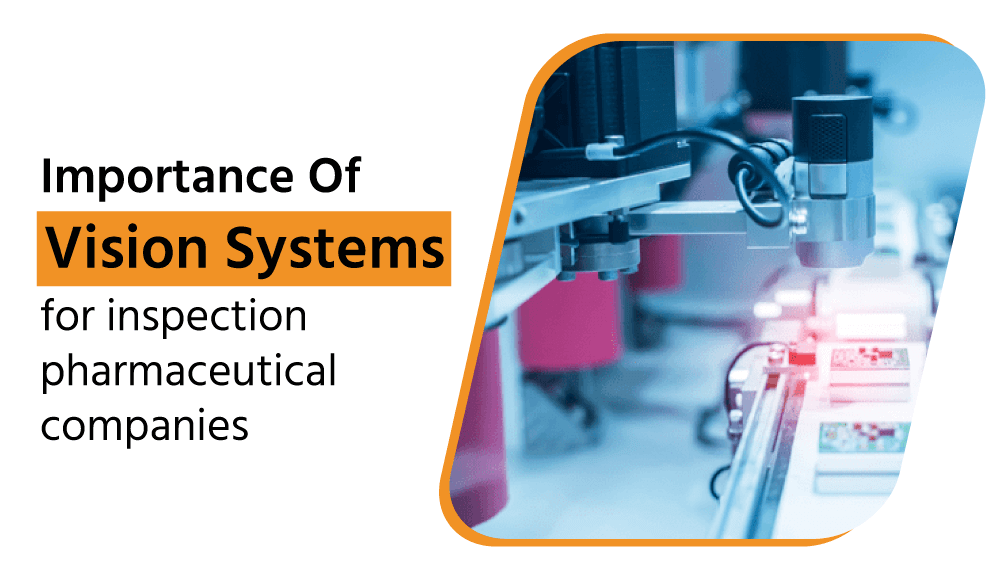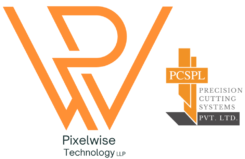
- Pixelwise Technology
- Feb 20, 2023
- Industry
The pharmaceutical industry is one of the many industries where product safety and quality are crucial factors. This necessitates the use of visual inspection in the pharmaceutical product manufacturing stage.
Vision inspection systems, also known as machine vision systems, make use of cutting-edge technology to detect defects, contaminants, and other anomalies that may compromise the integrity of pharmaceutical products. Vision inspection systems are used to detect issues that are visible to the naked eye. Since they are highly accurate, efficient and consistent, they are used for pharmaceutical industry quality control and sorting, automated inspection, robot guidance, and many other applications.
The use of a 2D and 3D vision inspection system in the pharmaceutical industry ensures that patients receive medications that are safe, effective, and of the highest quality.
Unlock precision in pharmaceutical inspection! Elevate your standards with cutting-edge vision systems. Get a quote!
A] How Does It Help with Quality Control?
Vision inspection ensures that products or materials meet the quality standards, specifications, and requirements. How does it help with pharma packaging quality control? It uses statistical analysis to identify defects, cracks, colour variations, improper labelling, and other visual imperfections that may affect the product’s performance or appearance.
If you are looking for ways to improve quality control, here’s a quick checklist that you can use to ensure quality control in your pharmaceutical organisation:
- Verify that the labels are placed properly. Confirm that required information, such as the number of pills, bottles in a pack, components of the kit, lot number, or batch size, is present on the label.
- Ensure that the products are enclosed properly and secured with tamper-proof seals.
- Check for signs of corrosion, discolouration, wear and tear, scratches, or any sign of material damage showing visible imperfections.
- Verify the products and materials meet the quality standards, such as size, shape, and other parameters.
- Ensure that required documents, such as quality inspection reports, are completed and up-to-date.
B] The Benefits of Using Vision Inspection for Pharma Packaging Quality Control
Vision systems are becoming increasingly important in the pharmaceutical industry, as they provide a cost-effective way to ensure accuracy and consistency in the manufacturing process. Here are some of the major pharma quality control benefits that vision inspection technology brings to pharmaceutical companies:
1. Results Are Accurate
Vision systems provide highly accurate results compared to manual product quality inspection as they are not affected by human error. This accuracy can help reduce the risk of potential mistakes that can lead to product recalls or lawsuits. These systems are also more efficient in terms of time as they can process large amounts of data quickly and accurately. It also helps companies keep up with the stringent regulations set by governments and regulatory bodies.
Vision systems offer an automated and accurate way to inspect pharmaceutical products, ensuring defects are detected before they reach the end user. Additionally, they can detect subtle defects that would be difficult to spot with traditional human inspection methods.
2. Increase In Productivity
Vision systems enable faster, more accurate, and quality inspection of pharmaceutical products, resulting in greater productivity. These systems allow for quick detection and identification of objects, allowing for more efficient packaging and production lines. This helps to reduce costs associated with manual labour, thus increasing efficiency. In addition, if there is a defect in the product, it can be quickly identified, and corrective measures can be taken.
3. Expenses Are Reduced
Vision systems also provide cost savings over traditional inspection methods. By automating the process, companies can reduce the need for manual labour and save money on materials and labour. Additionally, they can reduce the risk of costly damage or contamination to products that could occur with manual inspection.
Automating inspection processes with the vision systems eliminates the need to hire more labouring personnel, so expenses can be reduced. In addition, when pharmaceutical companies use vision systems, they can quickly process batches of products and ensure they meet quality standards before they leave the manufacturing site. This helps to reduce the costs associated with reworking products and can help maximise profits.
4. Business Goodwill Is Enhanced
Vision systems provide a true advantage to the pharmaceutical industry, as they can detect errors in drug packaging or other products faster than manual inspection. This helps to avoid costly recalls, which in turn helps to improve customer confidence and business goodwill. It also helps to improve operational efficiency and cost savings when customers know that the product they are receiving is safe and of high quality; it can significantly boost the company’s reputation.
5. Improved Data Quality
Vision systems can capture accurate and complete data, which is essential for pharmaceutical manufacturing. This helps to reduce the potential for errors and improve overall quality control. These systems can also be used to monitor production processes and identify potential issues or problems. It also helps to improve the efficiency of drug production and ensure that products are safe and compliant.
6. Increases safety
Vision inspection systems are vital in the pharmaceutical industry as they have the capability to identify foreign particles, contaminants, and incorrect labelling, thus reducing the risk of contaminated drugs and associated injuries. These systems also help prevent product tampering, allowing production to be halted instantly if any anomalies are detected. By detecting defects in the production process, vision systems can also ensure that all pharmaceutical products adhere to the necessary standards and regulations. Furthermore, these systems are useful in monitoring production processes, minimising potential errors and contamination risks. The use of pharma code inspection in carton pasting machines ensures proper packaging and readability despite any printing errors.
By embracing automated vision systems, pharmaceutical companies can reap the benefits of increased accuracy and efficiency, cost savings, improved safety, and data quality. This can result in a significant boost to their bottom line as well as improved customer confidence. Furthermore, companies can look forward to even greater advantages from these systems as technology evolves.
C] How to Choose the Right Vision Inspection System for Your Company’s Needs
Vision inspection systems are becoming an integral part of the pharmaceutical industry, especially since they ensure the safety and maintain consistency and integrity of products in the manufacturing process while ensuring that defective products are discarded from the production line.
Shared below is a vision inspection system selection criteria to help you choose the right automated machine vision system your company’s needs:
1] Check if the System is AI-compatible
Utilising artificial intelligence for vision inspection in printing and packaging can effectively help spot production issues and anomalies. The blend of machine vision, deep learning, and code-reading technology works together to ensure that primary and secondary packaging is correctly sealed, tamper-proof, properly assembled, and defect-free to prevent rework.
This not only enhances customer satisfaction but also minimises production costs for businesses.
2] Automated Vision Inspection System
While the concept of autonomous vision inspection has been around for some time, recent technological advancements have made it more practical for businesses to implement it.
The use of a single data source and processor for the entire manufacturing process can bring new efficiencies, simplifying installation, positioning, cabling, and maintenance. By integrating lighting and processing in one structure, manufacturers can achieve faster, more affordable, and easier inspection, resulting in potential cost savings.
3] Check Past Testimonials
Don’t ignore past customer testimonials when selecting a partner. Verify their background, challenges faced, and level of support provided. Analyse their success rates and performance across a variety of sectors. Find a partner who will assist and support you by offering instructions, guides, or other material you might require to thrive in the pharmaceutical industry.
To ensure a seamless process throughout the entire project and beyond, be sure to clarify the support services that are available to you. Doing so can prevent you from choosing an unfit partner.
We hope this brief vision inspection equipment selection guide can help you find the right automated machine vision systems for your needs.
D] Common Use Cases of Vision Inspection in the Pharmaceutical Industry
Vision inspection systems have become increasingly essential in the pharmaceutical industry, with numerous use cases to ensure the quality and safety of products. In this article, we explore some of the most common applications of vision inspection in pharmaceutical manufacturing.
Here are pharma packaging inspection use cases for you to get a better understanding:
- Inspection of fill levels in vials, bottles, and other containers
- Checking for proper assembly and functioning of medical devices and equipment
- Reading and verifying codes, such as barcodes and serial numbers, for tracking and traceability purposes
- Detecting and identifying microbiological growth in samples
- Ensuring correct and accurate labelling of dosage and expiration dates
- Monitoring and controlling manufacturing processes to reduce the risk of errors and contamination
- Inspecting blister packs and sachets to ensure proper sealing and integrity of the individual doses
- Verifying the accuracy of printed information and labels on ampoules and syringes.
Unlock precision in pharmaceutical inspection! Elevate your standards with cutting-edge vision systems. Get a quote!
E] Conclusion
Vision inspection technology is rapidly advancing, and the potential of this technology in the pharmaceutical industry is immense. The pharmaceutical business is one of the most strictly regulated sectors in the world, and when it comes to producing quality products that meet tough FDA standards, the potential of this technology in the pharmaceutical industry is immense. Vision systems can improve quality control processes, and quickly detect errors, reduce product recalls, and improve safety.
Pharmaceutical companies rely on advanced machine vision for manufacturing to meet the increasing volume demands for product inspection, whether it’s checking coloured pills, and syringes for missing or damaged components, data matrix codes, or labelling.
In the near future, vision systems will be used more extensively in the pharmaceutical industry to streamline production processes. Increased accuracy and efficiency in vision systems will undoubtedly benefit pharmaceutical companies and their customers.
We can help you streamline your quality control process, so take the first step and contact us to get started.





